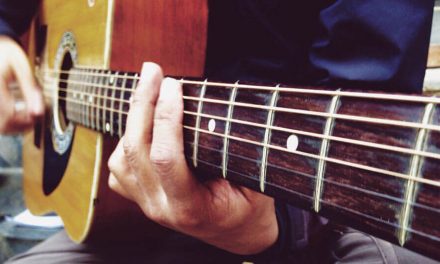How To Play Scales On Piano Fast
Introduction:
Whether you are playing in a jazz ensemble or in a rock band, playing fast melodic runs is necessary for every keyboard and piano player.
Scales are not just a tool for writing music but can give you a reference for which tones to play over which chord. If you want to learn how to play lightning-speed licks in different scales, then keep on scrolling!
The guitarist has exhausted all of his musical knowledge soloing over the same 3 chords again and again and now it’s time for you to lay down some fresh, improvised lines.
But where do you start? And how do you even manage to play 8 notes per second?
Once again, the answer is hard to practice, but you are not alone this time. We will walk you through the most important steps in learning to play keyboard scales. For the time being, we will focus only on the Natural Major scale and the Natural Minor scale.
If you are interested in learning additional scales on the piano, make sure to check out ourin-depth scales on the piano guide!
After learning to play the two scales, you will need to increase your speed. We have created a decent plan for practicing scales and increasing the tempo at which you can play scales.
You will need to improve your finger independence and hand dexterity. So, you are ready to start practicing?
Then let’s begin!
Table of Contents

The Basic Piano Scales: Natural Major And Natural Minor:
If you have no idea what musical scales are, then we highly recommend to read up on our piano scales guide. But if you want to go straight to practicing fast licks, we will explain the term briefly.
In music theory, a scale is any set of musical notes ordered by frequency or pitch. This means that you can write down a scale by choosing a certain note, then choose higher or lower notes until you have a certain set.
The number of scales that can be created is very high and a scale can be repeated in any number of octaves you want. But not all musical scales are equally useful or sound good enough.
One scale that everybody knows is the chromatic scale. If you order all 12 notes of the Western tone system, you get the chromatic scale. But this scale is rather complicated as it has a high number of notes and it actually contains all the other scales within itself.
A better example of a musical scale would be playing all black keys on a piano. If we would start on a G flat, we would get the Major pentatonic Major pentatonic G♭-A♭-B♭-D♭-E♭-G♭. We can form only one real major chord and one minor chord in this scale, but we can form a few suspended chords, as well.
The Natural Major and Natural Minor scale on the piano are formed by the 7 repeating white keys. The keys play, depending on where you start, a C major and an A Minor scale.
These two scales contain the same chords – 3 Major Chords, 3 Minor Chords and a Diminished chord. We can also form seventh chords with each of these, as well as 9th chords and above. This means that in this scale, you can play a lot of different melodies, chords, arpeggios and create interesting harmonies.
Tutorial: C Major
C Major is considered to be the happier of the two scales that you can play on only white keys. The scale is easy to memorize and you should first learn how to play it only ascending and then only descending, but with time, you will realize that you can play it by playing melodies, patterns or arpeggios in different orders.
Be sure to learn the scale in different octaves and with both hands.
Tutorial: A Minor
The A Minor scale contains the same notes as C major, but because the starting and ending note is most often the A note, and the chord related to it is an A Minor chord in this scale, the scale will sound sad.
A scale only has a real sound in relation to chords over which you play it, although the sequence of notes you play can actually emulate the sound of a scale. If you play lines and you always return to an A, this will result in the scale sounding like an A Minor chord and an A minor scale.
Basic Scales Summary:
A musical scale is a group of notes. Not all groups of notes are equally useful. A 3 tone chord can be viewed as a very small scale, but it definitely sounds good and is useful. Within the major and minor scales, you can form a lot of very good sounding chords and even some diatonic clusters.
For the time being, you should definitely work on mastering a few different Major and Minor scales, for example, E Minor, G major, and B minor, along with the white-keys only C Major and A Minor.
With time, you will be able to play all 12 Natural Minor and all 12 Natural major scales. For now, we will stick to C major and start working on how to play C Major fast. All of these exercises can, of course, be applied to A Minor, as all the shapes will visually look the same.
Bringing out the metronome:
how to play scales on piano fast

If you are confident in playing C Major and A Minor scales at a moderate speed, you are ready to begin learning how to improvise at higher speeds. We will divide the learning process into three steps which will differ both in terms of the technique used and in terms of what you are playing musically.
For the following exercises, we recommend using a metronome and slowly going up in the tempo. If you want, you are more than welcome to use drum tracks or instrumental backing tracks as a practice tool, instead. Be sure to make notes on the tempo at which you can play quarter notes, eight notes, and even sixteenth notes. For sixteenth notes, you are allowed to go even as slow as 50 BPM.
Keep in mind that building speed is not something you can do in one day, one week or even a month. What you want is slow, steady improvement, and not instant results. Listen to your body and don’t over practice. As mentioned before, a little pain is good, but injuries are not.
Practice makes perfect!
1) Linear diatonic lines:
One of the basic things is to play a scale linearly, playing each note in order. While this is fairly simple, it opens up doors for more complex lines later on. It also provides a decent transition to a different octave, especially when played at very high speeds.
There are two basic ways on how you can approach this. First, you can group the notes of an octave into groups of four. That means that you will start on a C note, play the notes C, D, E and F. After that you will finish with G, A, H and a C.
This means that you are finishing on the same note you started with, one octave above. If you need an idea how to continue the phrase, you could use one of the chord tones next, depending on the chords that come afterwards.
You will very likely have to re-adjust your playing technique slightly to make this work.
The second idea is to play triplets, groups of three notes. By doing this, you will end up on the perfect fifth above the note you started playing.
Starting on a C note, you will play C, D, E, then a group of F, G, and A, followed by B, C, and D, and ending with E, F and G.
This is also a great pattern as it allows you to finish on a chord tone. You could always play a lower C next, or even continue the phrase once again to finish up on a higher C.
With this technique, you can play a line that will span two whole octaves. You can even go up another octave with the same pattern, covering 3 octaves with more or less one shape.
You can maybe try to play triplets by alternating your hands, but this depends on your preference and on how fast you can play them.
Practice a lot of different combinations and you will probably find what suits you best.
2) Arpeggiated chord lines:
Arpeggios are small parts of a scale that use chord notes played in succession. Basically, an arpeggio is a type of broken chord, in which the notes that compose a chord are played or sung in a rising or descending order, although this is not necessarily the case.
If you know the chords of a C major scale, you can take any of the chords and arpeggiate it. You can use this to play an arpeggio line over each chord in a song.
But you can also add in additional tones to create 7th or suspended chords for more flavor. Start off just by practicing an arpeggio of a C major chord.
Now, what you could also do is to play all 7 C major arpeggios in succession. That would mean that you going 3 or four notes up, depending on whether you want to play the octave, then starting on the next note of C major.
Basically, you would play a C major arpeggio, then a D Minor arpeggio, followed by an E Minor arpeggio, and so on.
As mentioned, adding flavor notes can drastically change your playing. Sometimes, adding notes that are even not present in the scale can give your melody a distant, oriental, exotic or futuristic sound, depending on the notes chosen.
Remember that scales are just guiding tones and that you don’t only have to rely on them.
3) Piano trills and other ornaments:
Trills can help you enrich your melody and add new notes to your playing. Basically, these notes aren’t always necessary for the melody, but add a variation to the melody. Sometimes, you can use chord tones for trills.
Other times, you might want to create clusters of notes right next to each other, even playing a chromatic trill.
Final tips on building speed:
It is very important not to get stressed out if you can’t play a fast piece of music. Learning to play fast requires almost flawless finger control and an increased hand dexterity and stamina. You can’t get that overnight.
Start practicing at lower tempos and learn to control your fingers. This might take you weeks, even months, but there simply is no shortcut. You must make sure to use just the right amount of pressure and you must learn to not move your fingers more than what is necessary.
A final tip is to not get stuck at playing slow. Yes, this sounds weird considering the importance we put on playing fast. But no matter how correctly you play at slower tempos, you need to test out your speed from time to time.
Make sure to practice very short passages, even just two or three notes long, at high speeds until you are able to perform them fluently.
CONCLUSION
Learning to play scales at high tempos will require quite a lot of practice and time. Don’t be afraid of not seeing results right away. All instrument teachers agree that there was never a student who practiced and didn’t get better.
If you are interested in learning additional scales and patterns or if you want to learn more about different types of pianos and keyboards, make sure to check out our other articles. Keep on jamming and you are sure to grow into a great piano player!




![Learn How To Play Bass Guitar [LESSONS, CHORDS, SCALES] Ultimate Guide](https://www.themusicianlab.com/wp-content/uploads/2017/01/Learn_How_To_Play_Bass_GuitarIII-440x264.jpg)

